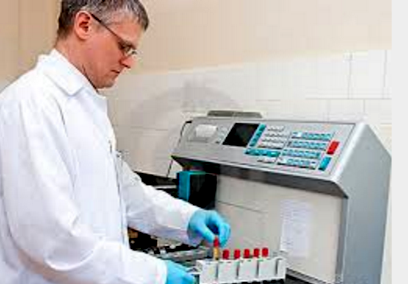Blog
-

A new simple blood test could help detect hearing loss at an earlier stage than hearing tests currently available allow.
 5 Oct , 2016
5 Oct , 2016
- About one in six UK and US adults experience some form of hearing loss.
- The decline tends to be gradual and too subtle for most people to notice.
- Now, experts reveal that the presence of prestin in the blood is an indicator.
- The higher the level of this protein, the greater the severity of hearing loss.
Researchers have identified a protein found in the blood that could be used to identify if someone really is going deaf. There are various causes of hearing loss, including age, viruses and trauma. Yet while a decline in hearing can sometimes be very quick, in most cases it is gradual and too subtle for most people to notice. It is often not picked up until it is quite severe, by which time other problems such as social isolation, depression and tinnitus — (a ringing in the ears common among those with hearing loss — may have set in).
The only way reduced hearing can currently be measured accurately is with an audiogram. However, the new blood test being trialed by scientists could potentially be conducted at a doctor’s lab — and according to initial results, it can identify hearing loss at a far earlier stage than a standard hearing test. This means hearing aids could be given to people sooner, which might help to prevent the development of social problems and tinnitus (why hearing loss can cause this is not clear). ‘Early identification of individuals at risk will allow intervention before development of disabling hearing loss and tinnitus,’ says the lead researcher, Dr Kourosh Parham, an associate professor at the University of Connecticut.The blood test centers on the identification of a protein called prestin, which is a sign of inner ear damage. This protein is critical to sensitive hearing in mammals but its exact role is not clear. The higher the level, the greater the severity of hearing loss. Studies on animals have found that prestin levels in the blood rise before hearing loss can be measured by audiograms. Age-related hearing loss, (the most common form), occurs as a result of damage to the fine hairs in the cochlea, a part of the inner ear that relays sound waves to the auditory (hearing) nerve. There are about 11,000 hair cells in an adult cochlea. A loss of about 10 per cent of these hairs can produce a hearing loss of up to 4 decibels — barely detectable to the patient.Adults with mild hearing loss of between 26 and 40 decibels may still hear reasonably well in one-to-one conversation but miss words if someone speaks quietly or if there is background noise. The researchers believe detectable levels of prestin may be released at a far earlier stage, perhaps when less than 1 per cent of the hairs have been lost.The test is due to be trialed on humans soon. Professor Jaydip Ray, a consultant neurologist at the Regional Department of Neurology in Sheffield Teaching Hospitals, called the blood test ‘a very exciting development’. ‘If this becomes established and widely available, it may provide an objective way to detect, measure and monitor common hearing disorders like never before,’ he says. Meanwhile, the same scientists are working on a blood test to identify benign paroxysmal positional vertigo or BPPV, the most common form of vertigo.
This condition occurs when crystals in the inner ear, which controls our sense of balance, become dislodged, causing brief episodes of dizziness. Currently the condition can only be diagnosed by a doctor spotting the symptoms or by getting the patient to perform certain head movements that bring on a spell of vertigo. The team at the University of Connecticut have found that the crystals (made of a protein called otolin-1) dissolve and are released into the bloodstream, where they can be detected. Initial trials on animals have found that those with BPPV have higher levels of otolin-1.Once diagnosed, BPPV can often be treated by a series of head movements conducted by a doctor to help move the crystals back into the correct place. Human trials start soon.
Source: The Daily Mirror UK
Image credit: Dreamstime © Sebastian Czapnik





























































































































































































































































































































































































































































































































































































